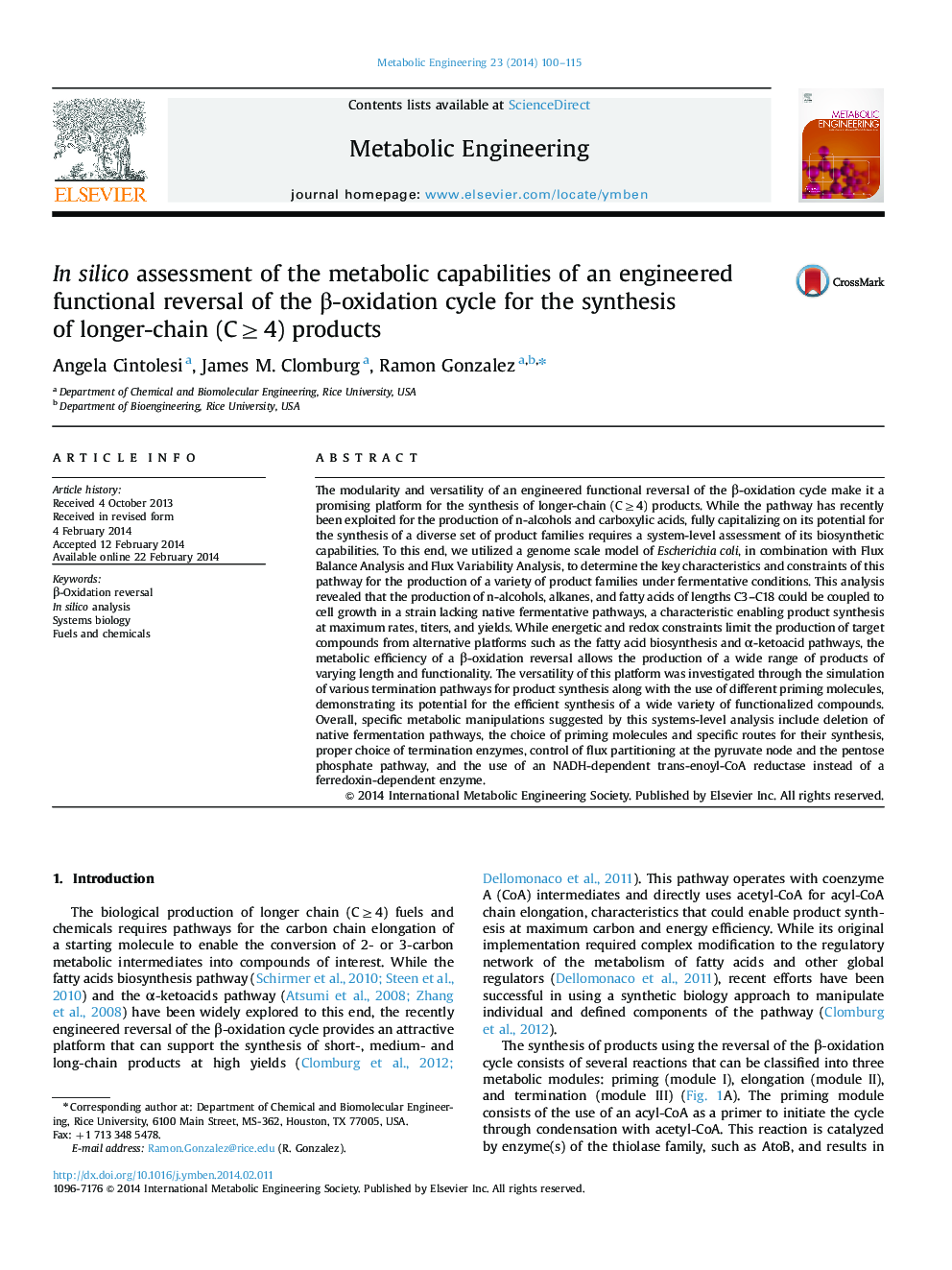| کد مقاله | کد نشریه | سال انتشار | مقاله انگلیسی | نسخه تمام متن |
|---|---|---|---|---|
| 31541 | 44810 | 2014 | 16 صفحه PDF | دانلود رایگان |

• System-level analysis of an engineered functional reversal of the β-oxidation cycle demonstrates coupling of cell growth and product synthesis.
• High efficiency of the β-oxidation reversal enabled by use of acetyl-CoA as extender unit.
• Use of NADH-dependent trans-enoyl-CoA reductase predicted to improve the synthesis of key product families.
• Identified optimal combination of priming molecules and termination pathways to maximize synthesis of functionalized molecules.
• Control of flux partitioning at the pyruvate node and the pentose phosphate pathway support efficient product synthesis.
The modularity and versatility of an engineered functional reversal of the β-oxidation cycle make it a promising platform for the synthesis of longer-chain (C≥4) products. While the pathway has recently been exploited for the production of n-alcohols and carboxylic acids, fully capitalizing on its potential for the synthesis of a diverse set of product families requires a system-level assessment of its biosynthetic capabilities. To this end, we utilized a genome scale model of Escherichia coli, in combination with Flux Balance Analysis and Flux Variability Analysis, to determine the key characteristics and constraints of this pathway for the production of a variety of product families under fermentative conditions. This analysis revealed that the production of n-alcohols, alkanes, and fatty acids of lengths C3–C18 could be coupled to cell growth in a strain lacking native fermentative pathways, a characteristic enabling product synthesis at maximum rates, titers, and yields. While energetic and redox constraints limit the production of target compounds from alternative platforms such as the fatty acid biosynthesis and α-ketoacid pathways, the metabolic efficiency of a β-oxidation reversal allows the production of a wide range of products of varying length and functionality. The versatility of this platform was investigated through the simulation of various termination pathways for product synthesis along with the use of different priming molecules, demonstrating its potential for the efficient synthesis of a wide variety of functionalized compounds. Overall, specific metabolic manipulations suggested by this systems-level analysis include deletion of native fermentation pathways, the choice of priming molecules and specific routes for their synthesis, proper choice of termination enzymes, control of flux partitioning at the pyruvate node and the pentose phosphate pathway, and the use of an NADH-dependent trans-enoyl-CoA reductase instead of a ferredoxin-dependent enzyme.
Journal: Metabolic Engineering - Volume 23, May 2014, Pages 100–115